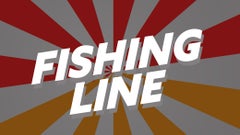Kevin VanDam Wins at Grand Lake Bassmaster Elite Event
Kevin VanDam's Winning Pattern, Baits and Gear
Practice:
The first thing VanDam noticed when he arrived at the lake to begin the 3-day practice period was the color of the water - it was considerably darker than he'd expected. "I knew the temperature was going to be warming, but it was going to be hard to sight-fish," he said. "Also, with the water being lower that what we've seen before, I knew people wouldn't be flipping bushes, either. "The spawn would normally be happening, but when we got there the water temperature was in the low to mid 50s and it was just too cold. Time of year can actually be more important than the temperature, though and a lot of the fish were staging and ready to go. They were just waiting on that warming trend." The warmup occurred last week and there was indeed a mass migration of males toward the banks. The larger females were naturally a bit behind, and those were VanDam's focus.
"I didn't find much on the main lake - most of them that I found were on secondary points in some of the creeks. They were definitely related to bottom composition, like where two different types of rocks came together. "Once I figured out what the fish were using, it was real easy to find because the LakeMaster mapping (on his Humminbird electronics) is so accurate - it's got every pocket and every creek to a T. I could see every channel swing and every place where the creek ran closer to the bank and every little flat spot. It showed every contour change and what the fish were relating to was anything irregular." The key depth range was 5 to 8 feet, although some of the fish were shallower. He enticed quality bites paralleling the bank with a square-bill crankbait and if there were docks sitting atop the transition zone, he'd skip a jig behind them. "I wasn't sure I was really them or that I was going to catch big bags, but every day I was getting three 5-pound-plus bites and a good number that were 3-plus. I knew it was going to take 20 pounds a day to have a shot at winning."
Competition:
VanDam amassed high-teens limits in short order on each of the first 3 days, which allowed him to spend much of those days pursuing kickers and searching for additional water to exploit on ensuing days. "The first couple hours of the morning before the sun came out, they were more aggressive and the strike zone was definitely bigger," he said. "They were really eating the crankbait - just choking it. "The reason I chose the dark brown craw color for the crankbait was from seeing the moss on the rocks and the crayfish were the same color - they're like chameleons when it comes to blending in with their surroundings." The majority of the fish he caught during the first half of the tournament were pre-spawn.
"The first day I had a 6-pounder that had eggs just pouring out of it - it hadn't spawned yet and it didn't have a mark on it. That showed how ready they were. "By Saturday and Sunday I was catching some that were spawned out and had bloody tails. It's not like the females stay on the beds long, but they'll stay in those same areas for a while after they've dropped their eggs." He visited dozens of places each day from the Sailboat Bridge down to Horse Creek, but methodically fished what he considered the best transition areas. "Sometimes it would be a 20-yard stretch or less, like maybe even 5 yards if there was a point at the end of a channel swing or something like that. I'd cover all the different depths and really pick those apart making multiple casts. "I rarely caught a bass from a place that didn't have some type of irregularity.
Winning Gear:
Crankbait gear: 7' medium-action Quantum Tour KVD cranking rod, Quantum Smoke 200 HD casting reel (5.3:1 ratio), 12-pound fluorocarbon line, Strike King KVD 1.5 (brown craw).
He swapped out the stock hooks on the bait for size 2 Mustad KVD Triple Grip trebles.
Jig gear: 7'4" heavy-action Quantum KVD Tour graphite rod, Quantum Smoke S3 casting reel (7.3:1 ratio), 20-pound fluorocarbon, 1/2-ounce Strike King Denny Brauer Structure Jig (green-pumpkin), Strike King Rage Menace trailer (green-pumpkin).
The Bottom Line:
Main factor: "Probably focusing on trying to cover as much water as I could during those first 2 hours when the bite was so aggressive. I pretty much knew that if I kept myself in that key water, I was going to get my bites. I just didn't know how many big ones I was going to get."
Performance edge: "The two most important things were definitely the LakeMaster mapping and the hooks on that crankbait. You heard a lot of guys talking about losing fish on crankbaits, but that wasn't happening to me. I've got a ton of confidence in those hooks."
Bassmaster Elite Tour Grand Lake Winning Pattern BassFan 5/1/18 (John Johnson)
Tommy Biffle's Pattern, Batis and Gear
He caught a 6 1/2-pounder and lost another good one on the jig on day 2. He finally pulled out the bug late in the day and boxed a 5 1/2 and a 4 and enticed several others 3. It was his primary offering the rest of the way and the 43 pounds he caught over the weekend was tops among the field. He stayed in the mid-lake region, fishing creeks from about three-fourths of the way in back out to the mouth. "Grand's got a lot of covers and pockets with no-wake zones for a long way and that keeps some people out of there. Those worked for me for a day of two, then I started fishing the shorter ones where I could run in and out." He focused on steeper banks for the first 2 days, catching fish at depths from 4 to 7 feet. He keyed on flatter stuff on the final 2, much of it on secondary points leading to the backs of the pockets.
Gear:
Hardhead gear: 7'6" heavy-action Quantum Smoke flipping stick, Quantum Smoke casting reel (7.3:1 ratio), 20-pound Sunline Shooter fluorocarbon line, 7/16-ounce Gene Larew Biffle Hardhead jig, Larew Biffle Bug (Sooner run).
Tube gear: 6'10" medium-heavy Quantum rod, same reel and line, 1/8-ounce Elite Tungsten weight, 4/0 Eagle Claw hook with wire keeper, 4 1/2" Larew Fat Tail Tube (watermelon green with tentacles dyed chartreuse).
Jig gear: Same rod, reel and line as tube, 3/8-ounce River2Sea Tommy Biffle Junkyard Jig (green-pumpkin/orange/black scale), unnamed chunk trailer (green-pumpkin/purple).
Main factor: "Staying on those flatter pockets the last 2 days."
Performance edge: "The Junkyard Jig, the Bug and the Hardhead."
Bassmaster Tour Grand Lake Patterns 2-5 BassFan 5/3/18 (John Johnson)
Roy Hawk's Pattern, Baits and Gear
Five to 12 feet was his key depth range, although some of his fish were a bit shallower. The fish were relating to various types of cover that included rocks, wood, docks and brush piles. "I was mainly in Wolf Creek and some of the other creeks in that area. I worked Elk Creek pretty hard the first day, but I ended up phasing that out as time went on." A spinnerbait produced the bulk of his best specimens. He flipped a jig to catch a few others that he took to the scale. "The first couple days I didn't feel totally strong about the spinnerbait so I was still running inside and flipping and going back and forth. But when I looked back at it, all the ones I caught that were 4 pounds or bigger were on the spinnerbait.
Gear:
Spinnerbait gear: 7'4" heavy-action Taipan Roy Hawk Signature Series rod, Quantum Tour S3 casting reel (7.3:1 ratio), 20-pound Yamamoto Sugoi flurocarbon line, 3/4-ounce Pepper Custom Baits spinnerbait (young gill).
The spinnerbait was a double willow-leaf model (silver up front and gold in the rear).
Flipping gear: 7'6" heavy-action Taipan flipping stick, Quantum Smoke S3 casting reel (8:1 ratio), same line, 1/2-ounce Pepper Custom Baits jig (green-pumpkin), Yamamoto Cowboy trailer (green-pumpkin).
Main factor: "Keying on places where the fish were coming to me."
Performance edge: "The mapping on the Lowrance HDS-12 was critical, especially for a lake I wasn't familiar with."
Bassmaster Tour Grand Lake Patterns 2-5 BassFan 5/3/18 (John Johnson)
Bradley Roy's Pattern, Baits and Gear
"I could see where the shelves came off and I'd stay back and pitch to where I thought the beds would be. A lot of times I'd catch the male first and then I'd make repetitive casts back in there to try to catch the female. "The reason I think they were spawning there is that when the water's down, they're more comfortable there and they can easily slide off into deeper water. The creek channel wasn't far away and it might be 10 feet deep if it was in the back of a pocket and 15 or 20 feet on a main creek arm." His bites came from water that ranged from 2 to 6 feet in depth. About 80 percent of his fish were enticed by a Texas-rigged creature bait and the others fell for a spinnerbait.
Gear:
Pitching gear: 7'6" heavy-action MHX Elite Pro Series rod, unnamed casting reel (7:1 ratio), 17-pound Seaguar AbrazX fluorocarbon line, unnamed 1/4-ounce bullet weight, unnamed 4/0 straight-shank hook, Cabin Creek Express Bug (green-pumpkin/blue).
Spinnerbait gear: 7'3" medium-heavy MHX rod, unnamed casting reel (6.4:1 ratio), 15-pound Seaguar InvizX fluorocarbon, unnamed 3/8-ounce spinnerbait (shad with No. 5 willow-leaf blades). Main factor: "Fishing new water every day and not just running the same water over and over again." Performance edge: "Having a rod with the right action and good sensitivity. A lot of the fish weren't biting the bait that hard - they'd just pick it up or swim off with it a little. The sensitivity would clue me in that there were fish there that I couldn't see."
Bassmaster Tour Grand Lake Patterns 2-5 BassFan 5/3/18 (John Johnson)
Seth Feider's Pattern, Baits and Gear
He caught about half of his weigh-in fish on a Texas-rigged tube. A few came on a Texas-rigged craw and he got one each on a Rapala DT-6 crankbait and a dropshot rig. The fish in Wolf Creek were in 2 to 6 feet of water. He caught his biggest one - a 6-pounder - on day 4 and said it was an epic struggle. "She was scrappy and she whooped me. I got her on the side of a dock and it was just a terrible job of fish-landing. It was the only one I went down and grabbed all week."
Gear:
Tube gear: 7' medium-heavy Daiwa Tatula Brent Ehrler Signature Series rod, Daiwa Tatula SV casting reel, 30-pound Sufix braided line (main line), 8-pound Sufix fluorocarbon (leader), unnamed 1/4-ounce tungsten weight, 4/0 VMC wide-gap hook, 4 1/2" unnamed tube (green-pumpkin).
He threw his BioSpawn VileCraw (green-pumpkin) on the same gear.
Cranking gear: 7' medium-action Daiwa Steez Fle-X-Lite rod, same reel, 12-pound Sufux fluorocarbon line, Rapala DT-6 (penguin).
Main factor: "Finding those few bed-fish in practice really saved me."
Performance edge: "Probably my sunglasses. I wore Amphibias with yellow lenses, which allowed me to see those fish when it was still basically dark on the first day. I was able to catch them quick and get the ball rolling."
Bassmaster Tour Grand Lake Patterns 2-5 BassFan 5/3/18 (John Johnson)



































